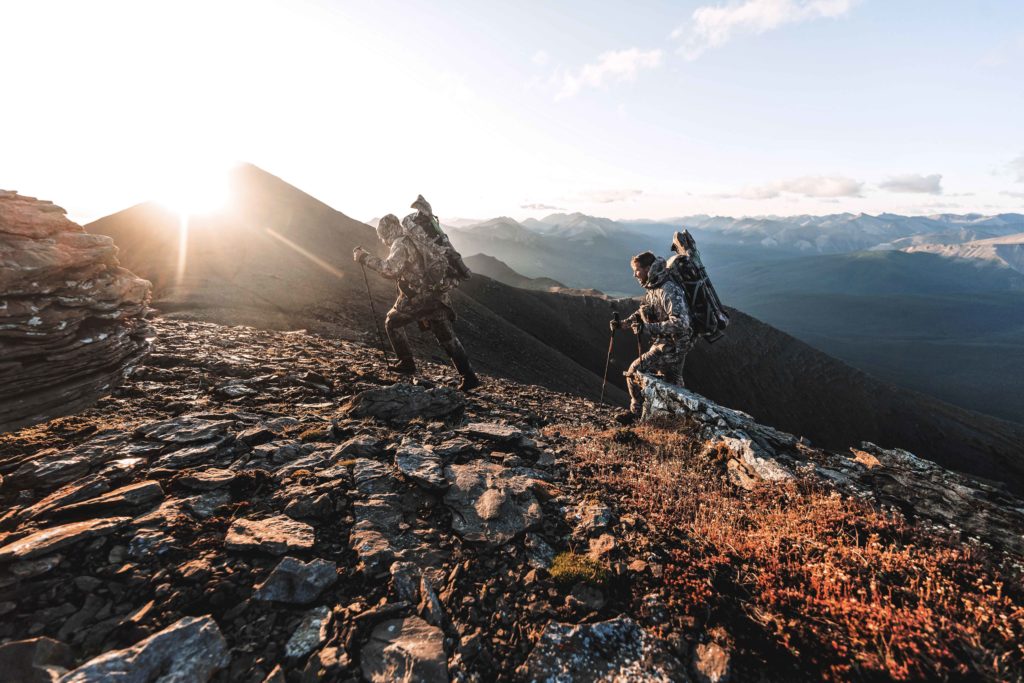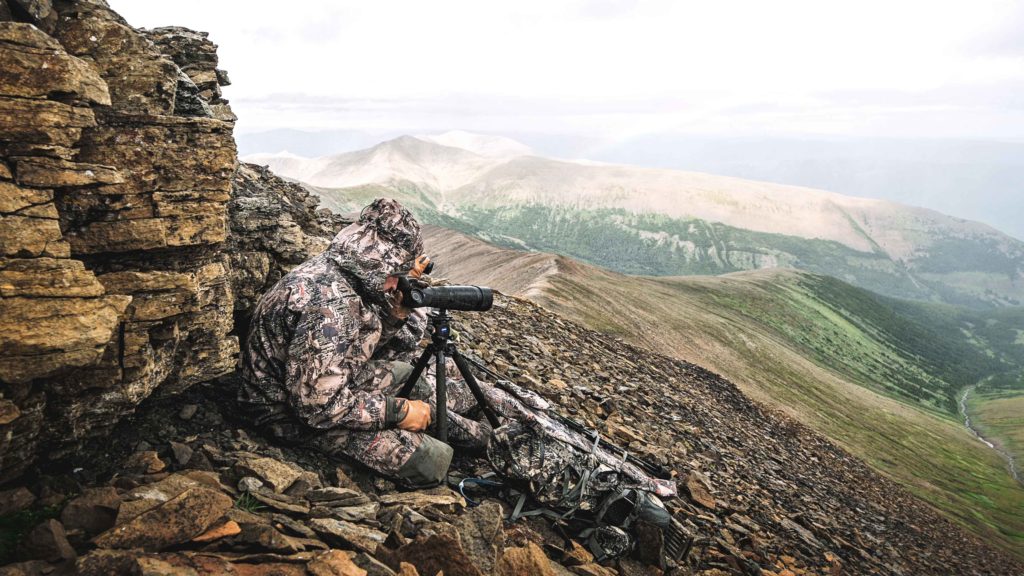How to handle the Influence of Gravity
With a horizontal shot, gravity acts perpendicularly to the direction of the shot and thus results in deviations from a straight path up to the known, practically parabolic downward trajectory. After ranging the riflescope therefore points somewhat downward so that the sighting line intersects the trajectory at the distance of the ranging range.
If you shoot straight up or down, gravity has a braking or accelerating effect on the bullet only, but does not lead to a lateral deviation. The trajectory remains a straight line specified by the axis of the barrel. It no longer moves toward the sighting line, but away from it. The point of impact would thus be always clearly above the target.

In practice, no one shoots straight up or down. However, when hunting in the mountains it is quite common to get off a shot at 30 to 40° angles. The portion of gravity that works perpendicular to the trajectory which is responsible for the directional deviation is then noticeably lower. At an angle of 35°, it is still around 80% (cos 35° = 0.82).
As a result, the trajectory is less curved, i.e. the fall of shot is less. The result is a high shot! In general, the old “uphill and downhill – aim lower” rule is true.

Practical test
How noticeable is this effect in practice? State-of-the-art ballistic programs can calculate very precisely; however, very concrete attempts provide a better feeling of the practical effect. Two different fast cartridges were used; the angle was 35°. The weapons were ranged with a 4 cm high shot at 100 m.
This resulted in the following results which are theoretically predictable for uphill and downhill in the same manner:
Test I with fast bullet: Blaser R93, 7 mm Blaser Magnum with 9.2 g bullet
| Range to target: | 100 m | 200 m | 300 m |
| Point of impact for horizontal shot | +4 cm | 0 cm | -24 cm |
| Point of impact for 35° shot | +5 cm | +4 cm | -7 cm |
| Difference between horizontal and 35° shot | 1 cm | 4 cm | 17 cm |
Test II with slower bullet: Blaser K95, .308 Win. with 11.7 g bullet
| Range to target: | 100 m | 200 m | 300 m |
| Point of impact for horizontal shot | +4 cm | -8 cm | -44 cm |
| Point of impact for 35° shot | +6 cm | +4 cm | -18 cm |
| Difference between horizontal and 35° shot | 2 cm | 12 cm | 26 cm |
These results show that no difficult calculations, which are often more confusing than helpful, are required for normal hunting calibers up to 200 m, even at a 30 to 40° angle (uphill or downhill).
Normal aiming is sufficient in this range. For slow bullets at longer distances or at even steeper angles, you should take a closer look at how everything interacts; there are then considerable effects on the ballistics and the point of impact. This applies for uphill and downhill as well.